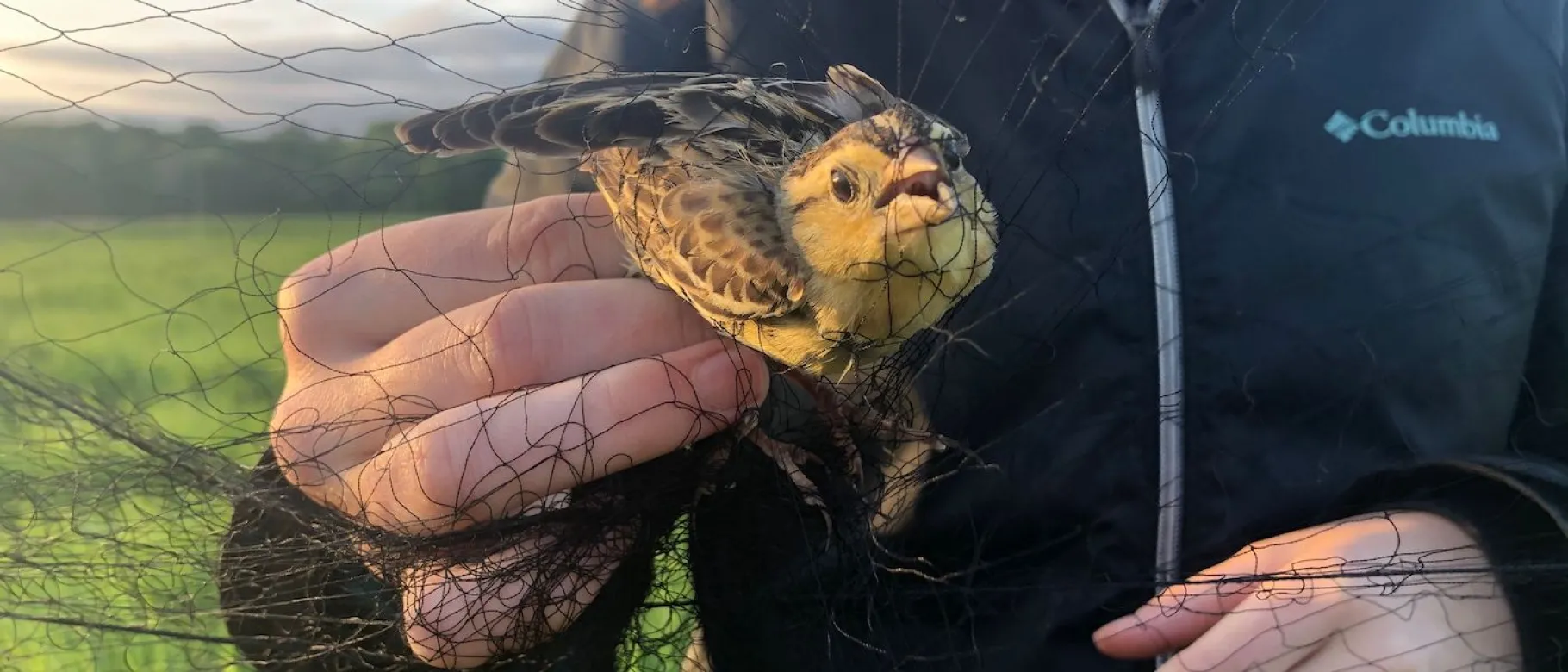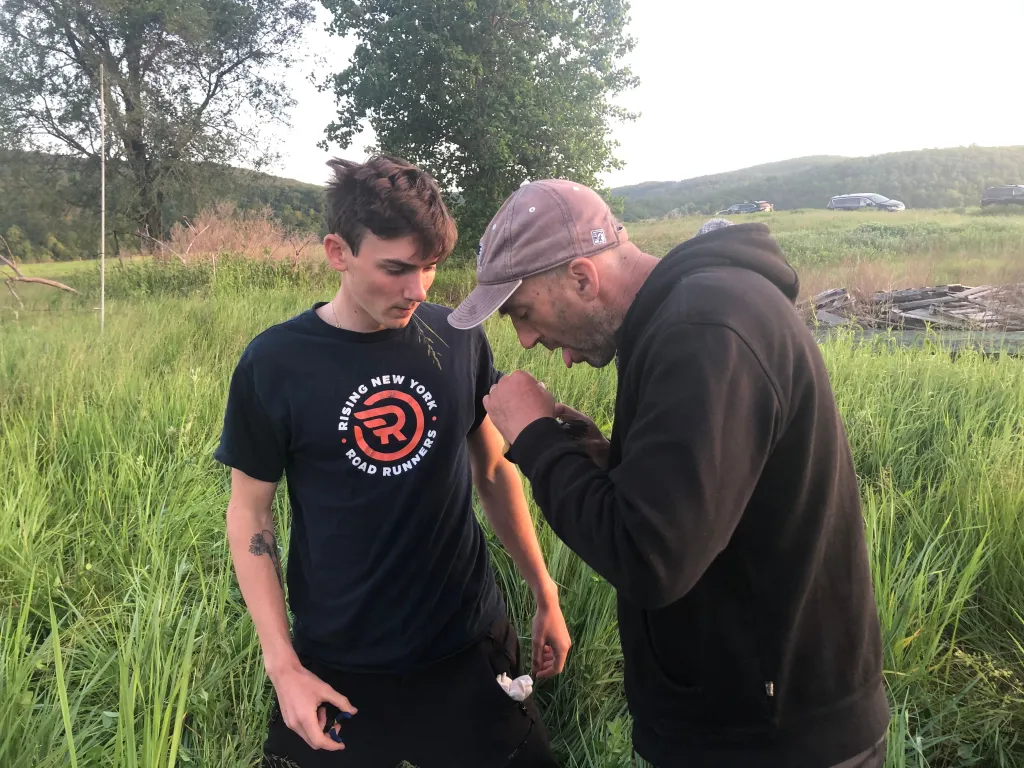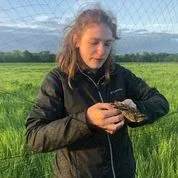Summer songbird research takes Noah Perlut and students to New York

While some students take a break to relax during the summer months, Xander Vitarelli (Environmental Science, ’22) is busy conducting research on the movements, migration, and life-cycles of bobolinks at the Hudson Valley Farm Hub in Hurley, New York.
“Bobolinks actually have an amazing migration pattern,” Vitarelli explained. “They will go from up in Vermont or New York all the way down to Argentina and back.”
Recent advances in miniaturizing global positional systems (GPS) have enabled scientists to track the movements of individual organisms that migrate. These devices send the position data to satellites, enabling us to follow them in real time. For songbirds, geolocators, which take light readings rather than GPS points, are also helping to fill in our knowledge gaps on migration. Birds wear geolocators for a year, where the device stores the data and is retrieved later for analysis.
Vitarelli is working on the project with fellow student Julia Mast (Marine Biology, ’22) and Noah Perlut, Ph.D., professor and assistant academic director of the School of Marine and Environmental Programs.
“These results are critically important because they reveal where a species moves and therefore which habitats are used and when,” Perlut stated. “That information is foundational to understanding the past, present, and future of all migratory species’ ecology and evolution.”
The research coincides with on-going work Perlut has been doing with bobolinks on a farm in Shelburne, Vermont. Perlut and the students are simultaneously comparing bobolink movement patterns between a small, isolated population at the Hudson Valley Farm Hub with the large, open population at the Shelburne site.
“If you look at a satellite image from New York, the Hudson Valley Farm Hub has only one area of field, with a surrounding area of woodlands and urban landscapes” Vitarelli said. “In Vermont, the Shelburne farm and the surrounding areas are all grassland.”
There is no sleeping in for Vitarelli during this project. He was recently up at four a.m. to search for Bobolinks in the field at the farm hub.
“We found 12 individual birds,” he stated. “We try to capture and band them. We wanted to get at least get four birds to put satellite tags on and we accomplished that.”
The data will begin to unravel the life-histories of the birds breeding at the farm hub. The purpose of the project is to help landowners better understand the birds on their property so that they may co-exist, balancing farming practices and production with the needs of grassland birds. Based on these stories, some landowners in Vermont have made changes to their operations to prevent harming the birds, including altering the schedules of when they mow their fields.
“The nice thing about the data we are collecting is it can be used for a multitude of research purposes,” Vitarelli commented. “We can see which birds have a higher survival rate based on their trip to Argentina, what their migration pattern is like, and where they go in the middle of that migration.”
Vitarelli is hoping to have a career in avian ecology after graduation.
“The thing I really appreciate about UNE is that it offers this hands-on, almost grad school level research, to undergraduates,” he said.
Perlut says there is plenty more for him and Vitarelli to learn during this project.
“Bobolinks have incredibly complicated migrations and we are just beginning to unravel this complexity through the use of tracking devices,” he stated. “These tracking technologies are incredibly powerful, so many more discoveries await. Bobolinks continue to surprise me at every turn and I have full confidence that they will continue to do so in this project.”

